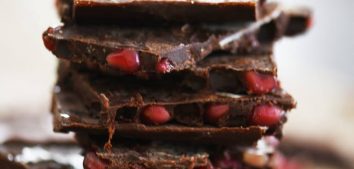
Yo-yo effect
KEEP UP THE GOOD WORK!
Let healthy eating become your lifestyle and not just a passing trend – that’s what I always say.
Preparations to summer season complete! Congratulations to all of you who have kept their resolutions.
Now you probably can’t wait to get the well-deserved reward and celebrate your achievement? Sure! Balance is key! Most people go crazy during their summer holidays and catch up on the months of fasting which of course results in coming back to their previous weight, usually in excess.
You’ve been there many times. Every year you manage to lose some weight but then you regain it in a few months. Many people face the same problem. The mechanism is almost always the same. At first you regain a kilo or two. Unfortunately, most of us ignore it.
The reason for weight gain is usually picking a too radical diet, e.g. with too few calories, or worse – a starvation diet. We focus on achieving our goal as fast as possible and forget about our health and a balanced diet. The fierce fight for a slender body results in kilograms coming back in a short time. Then we start another diet and the story goes on. That’s why the topic of today’s post is yo-yo effect.
I wrote in the blog before that if you want to lose weight, you must eat!
The results of yoyo-effect:
- Weight gain causes the deposition of body fat, especially in your abdomen, which can result in developing diabetes and cardiovascular diseases.
- Body weight fluctuations also have a bad effect on mental health because they underrate self-esteem, motivation and faith in success.
- A higher risk of depression
What causes yo-yo effect?
- Starvation and crash diets – they help lose weight rapidly but at the same time cause the greatest deposition of extra energy and changing calories to fat to secure the body against another fast. After the treatment our metabolism is very slow and that’s why increasing the caloric supply results in a sudden increase in body weight.
- A poorly balanced diet that is low in nutrients – Your diet should be balanced and the calorific value of your meals should be adjusted to the amount of energy you use. Enrich your menu with dark bread, pasta, brown rice, groats, meat and fish from a safe source, healthy fats, lots of vegetables and fruit.
- Lack of physical activity – while on a diet you should remember about physical activity not to lose your muscles. What is more, workouts speed up metabolism and control energy balance. In order to maintain the effects of the diet, it is worth exercising 2-3 times a week. You don’t know how to start? Check out the easy START training in my application 🙂
- Coming back to old eating habits – we can avoid the yo-yo effect if we start treating the diet as a way to a healthy lifestyle and just a one-time adventure for the summer season. A slimming treatment is a time for developing new eating habits that will change our approach to food for ever.
- Inappropriate comeback from the diet – you should go back to “normal” eating gradually and increase the amount of calories by 100-150 kcal per week. This process will give your body the time to adjust to a bigger supply of energy and will not store calories as fat tissue. Leaving the diet is an individual process and depends on many factors, such as age, weight, sex, etc. If you notice that your weight is slightly going up, slow down the pace of increasing the amount of calories.
- Insufficient hydration – it is recommended to drink about 2 litres of water or herbal tea a day. Water speeds up digestion and has a positive effect on our metabolism.
After you have finished the diet you should still stick to these tips to eliminate the risk of returning to your previous body weight. Developing new eating habits, frequent physical activity and a balanced diet are very important parts of a healthy lifestyle.
Reach for healthy substitutes
If you feel like having some chocolate as a reward for completing the diet, then instead of a milk chocolate bar with nuts, choose healthy substitutes! They are just as tasty as chocolate from TV commercials, but much healthier 🙂
You can find such recipes not only in my blog, but also in the Diet & Training by Ann app.
I keep saying that we can try everything but in moderation, we should find some balance and replace all the tasty snacks with healthy treats.
Bibliography:
- Hwalla N, Koleilat M. Dietetic practice: the past, present and future. East Mediterr Health J. 2004;10(6):716-30.
- Donejko M, Galicka E, Miczyporuk M, Przylipiakak J, Przylipiak A. Mechanizmy regulacji, masy tkanki tłuszczowej pod wpływem glusanu epigallokatechiny zawartego w zielonej herbacie. Postępy Fizjoterapii. 2013;3:167-73.
- Wójcik B, Górski J. Brunatna tkanka tłuszczowa u dorosłego człowieka: występowanie i funkcja. Endokrynol Otył Zab Przem Mat. 2011;7(1):34-40.
- Murawska Ciałowicz E. Tkanka tłuszczowa – charakterystyka morfologiczna i biochemiczna różnych depozytów. Postepy Hig Med Dosw (online). 2017; 71: 466-84.











Comments No Comments
Join the discussion…